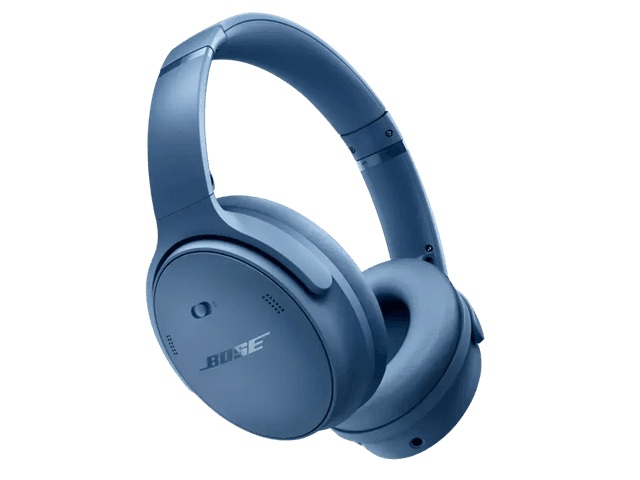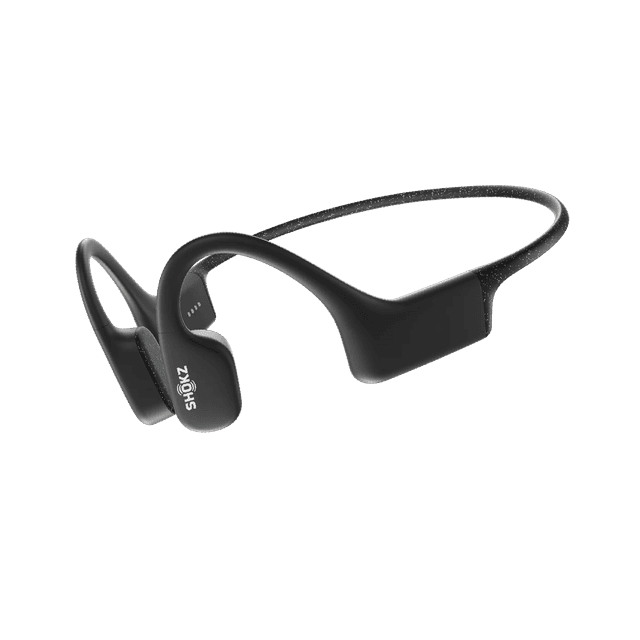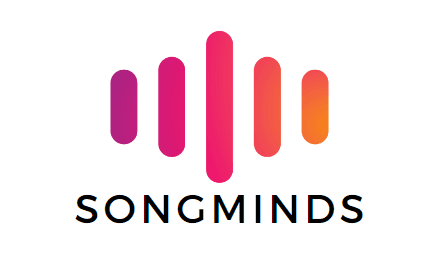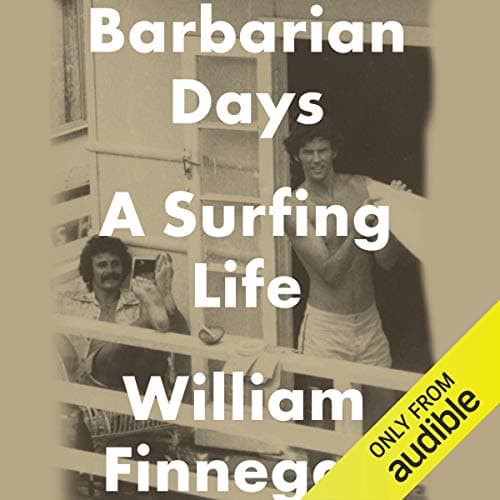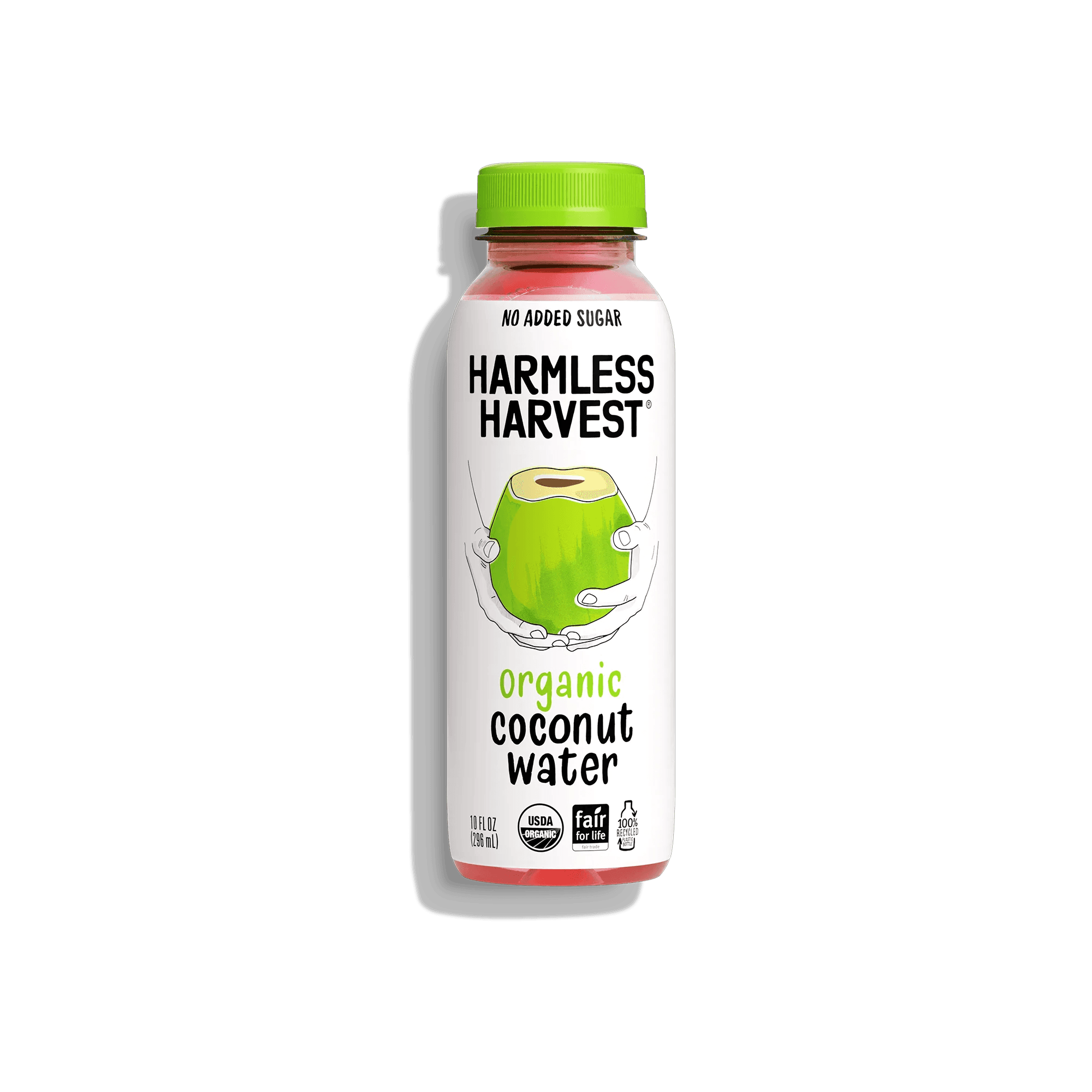Bose QuietComfort vs. Shokz OpenSwim
Bose QuietComfort
The Bose QuietComfort Headphones are wireless over-ear headphones with active noise cancellation. They offer two primary listening modes: Quiet Mode for maximum noise reduction and Aware Mode, which lets in ambient sounds. Users can switch between these modes depending on their environment. Battery life lasts up to 24 hours on a full charge, with a quick-charge option providing additional playback after just 15 minutes of charging. Bluetooth connectivity supports multipoint pairing, allowing the headphones to connect to two devices at the same time. The design includes plush ear cushions and a reinforced headband, built for long-term comfort. Sound settings such as bass, midrange, and treble can be adjusted through the Bose app. An optional audio cable with an in-line microphone is included for wired use when Bluetooth is unavailable or undesired. The headphones come with a carrying case, USB-C charging cable, and audio cable. They are priced at $349 and available in multiple...
Shokz OpenSwim
The Shokz OpenSwim is a set of bone conduction headphones designed specifically for swimming. Unlike regular earbuds, these don’t go inside your ears. Instead, they rest on your cheekbones and use vibrations to send sound directly into your inner ear. This means you can still hear what’s happening around you while listening to music. They don’t have Bluetooth because Bluetooth doesn’t work underwater. Instead, they come with 4GB of internal storage, so you load your own MP3 files onto them. The battery lasts about 8 hours, which is plenty for most swim sessions. They’re IP68 waterproof, meaning they can handle continuous submersion, though there’s usually a depth limit (often around 2 meters). At 30g, they’re lightweight and designed to stay in place while swimming. The package includes a USB charging cradle, a carrying case, and swimming earplugs, which help improve sound quality underwater. People who use them generally love the sound quality and find them easy to use, thoug...
Reviews
Reviewed on 2/20/2025
I switched to Bose QuietComfort after my AIrPods Max broke down. I think they're great, I actually enjoy using them more on an everyday basis than I did using my AirPods. They just work - they are light, they pair well, sound quality is good, active noise cancellation works well. Comfort is important to me as I like to listen to audiobooks for extended periods of time, and these are more comfortable than my AirPods Max used to be. The metal connecting bar of the AirPods used to dig into my head, while I have no such feelings of discomfort with my QuietComfort headphones. I am subtracting one star for two problems. The first one is that the microphone doesn't always work well. I've had multiple people complain me they can't hear me very well when I called them using these headphones. I thought it was a hardware issues so I had them replaced but them problem occurs on my new pair too. I started borrowing my wife's Bose QuietComfort 45, which appears to be the exactly same headphone but without the microphone issues. The second problem is occasional sound distortions. This mostly happens during phone calls and I've experienced them on both QuietComfort and QuietComfort 45. The distortions seem to occur on higher frequency sounds and usually last until the end of the call or until I restart the headphones. Luckily the headphones restart and pair quickly so this is less of a nuisance than it could otherwise be. Overall, I recommend these headphones if you tend to wear your headphones for extended periods of time and are looking for high quality of sounds and effective noise cancellation. They may not be the best pair of headphones for phone calls, though.
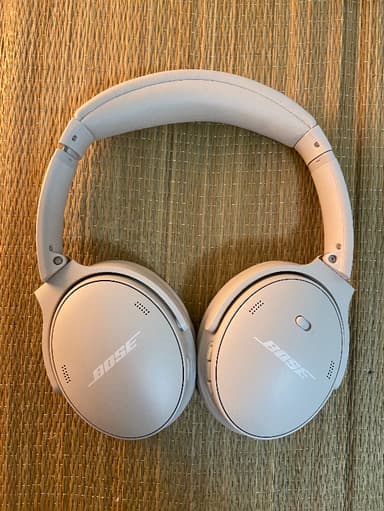
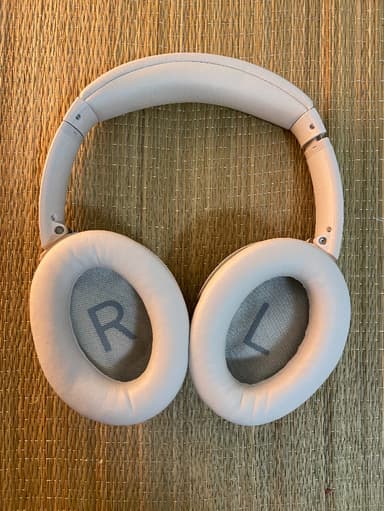
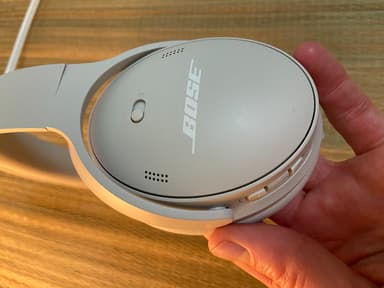
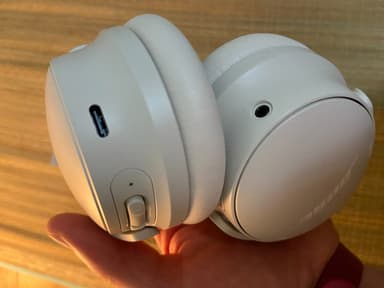
Reviews
Reviewed on 2/16/2025
I bought my OpenSwim headphones in 2021 and four years later they are still serving me well. They survived multiple trips to Thailand and Greece, including both in the open sea and in swimming pools. They were fun to use for snorkeling. I love the sound quality, I was genuinely surprised how good they sounds underwater, it's like having your own sound system. I wish they had bluetooth that you could use when not submerged, and as far as I know the newer models do have that. With either model, you still need to load your own songs for underwater use though. Everyone uses streaming services these days so mp3 are actually kind of hard to find, which is something I didn't expect I'd struggle with when I first bought these. Except for a few drawbacks that really amount to nitpicking, these are excellent, reliable, sturdy, and high quality headphones.
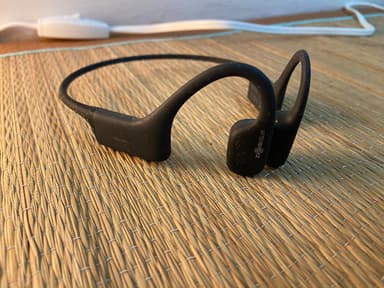
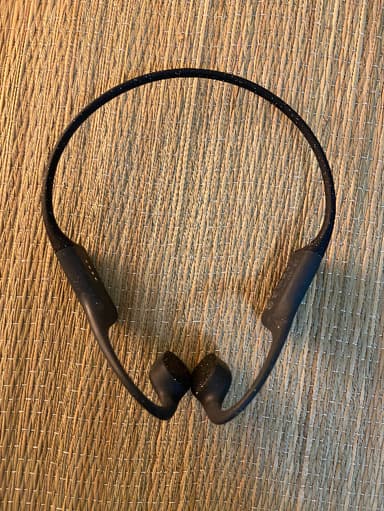
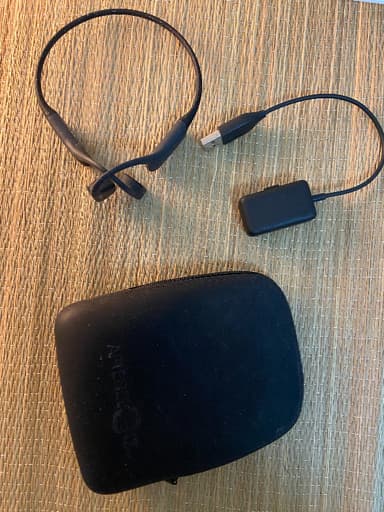
| Item | Votes | Upvote |
|---|---|---|
| Long battery life | 1 | |
| Quick to charge | 1 | |
| Very light | 1 | |
| Available in multiple colors | 1 | |
| Comfortable | 1 | |
| Noise cancelling works well | 1 |
| Item | Votes | Upvote |
|---|---|---|
| Microphone could be more sensitive | 1 | |
| Sounds come out distorted sometimes | 1 |
| Item | Votes | Upvote |
|---|---|---|
| Work underwater | 1 | |
| Lightweight | 1 | |
| Battery life | 1 |
| Item | Votes | Upvote |
|---|---|---|
| No blueetooth | 1 |
Frequently Asked Questions
Bose QuietComfort headphones are designed for general use with features like active noise cancellation, long battery life, and comfort for extended listening. They are ideal for audiobooks, music, and calls. In contrast, Shokz OpenSwim headphones are specifically designed for swimming, using bone conduction technology to deliver sound without blocking the ears. While the QuietComfort excels in sound quality and noise isolation for everyday environments, the OpenSwim is better suited for aquatic activities where traditional headphones would fail.
Bose QuietComfort headphones are known for their plush ear cushions and lightweight design, making them very comfortable for long listening sessions, especially for audiobooks or music. On the other hand, Shokz OpenSwim headphones rest on the cheekbones and do not go inside the ears, which can be comfortable for swimming but may not provide the same level of comfort for extended use outside of water. Therefore, for long listening sessions outside of swimming, Bose QuietComfort is generally the more comfortable option.
Bose QuietComfort headphones are designed for high-quality audio with adjustable sound settings, making them superior for music and general listening. They provide excellent noise cancellation, enhancing the listening experience. In contrast, Shokz OpenSwim headphones use bone conduction technology, which can deliver good sound quality underwater but may not match the overall audio fidelity of the Bose QuietComfort in typical environments. Therefore, for sound quality, Bose QuietComfort is the better choice.
Shokz OpenSwim headphones are specifically designed for swimming and are waterproof, making them ideal for aquatic sports. They stay in place while swimming and allow users to hear ambient sounds. In contrast, Bose QuietComfort headphones are not designed for water exposure and are better suited for everyday use. Therefore, for sports, particularly swimming, Shokz OpenSwim is the more suitable option.
Bose QuietComfort headphones offer up to 24 hours of battery life on a full charge, along with a quick-charge feature. In comparison, Shokz OpenSwim headphones have a battery life of about 8 hours. Therefore, for longer usage without needing to recharge, Bose QuietComfort headphones have a significantly longer battery life.
The pros of the Bose QuietComfort headphones include long battery life, quick charging, lightweight design, availability in multiple colors, comfort, and effective noise cancellation. However, the cons include a microphone that could be more sensitive and occasional sound distortion.
The Bose QuietComfort headphones offer a battery life of up to 24 hours on a full charge. Additionally, they feature a quick-charge option that provides extra playback time after just 15 minutes of charging.
The main features of the Bose QuietComfort headphones include active noise cancellation with two listening modes (Quiet Mode and Aware Mode), Bluetooth connectivity with multipoint pairing, adjustable sound settings through the Bose app, plush ear cushions for comfort, and an optional audio cable with an in-line microphone for wired use.
The Bose QuietComfort headphones are designed for long-term comfort, featuring plush ear cushions and a reinforced headband. Users have reported that they are comfortable enough for extended listening sessions, such as audiobooks.
Users have noted that the microphone on the Bose QuietComfort headphones could be more sensitive, with some reporting difficulties in being heard clearly during phone calls. This issue has been mentioned even after replacing the headphones.
The Bose QuietComfort headphones are priced at $349.
The pros of Shokz OpenSwim include the ability to work underwater, being lightweight at just 30g, and having a battery life of about 8 hours, which is suitable for most swim sessions. The con is that they do not have Bluetooth functionality, as Bluetooth does not work underwater.
The Shokz OpenSwim is a set of bone conduction headphones designed specifically for swimming. Unlike regular earbuds, they rest on your cheekbones and use vibrations to send sound directly into your inner ear, allowing you to hear your surroundings while listening to music. They come with 4GB of internal storage for MP3 files and are IP68 waterproof.
Users generally report that the sound quality of Shokz OpenSwim is surprisingly good underwater, likening it to having a personal sound system. Many find it enjoyable for activities like snorkeling.
The battery life of Shokz OpenSwim lasts about 8 hours, which is considered sufficient for most swimming sessions. However, some users have mentioned mixed experiences regarding battery longevity over time.
The Shokz OpenSwim package includes a USB charging cradle, a carrying case, and swimming earplugs, which help improve sound quality while underwater.
No, Shokz OpenSwim does not have Bluetooth functionality because Bluetooth does not work underwater. Users must load their own MP3 files onto the headphones for use while swimming.
